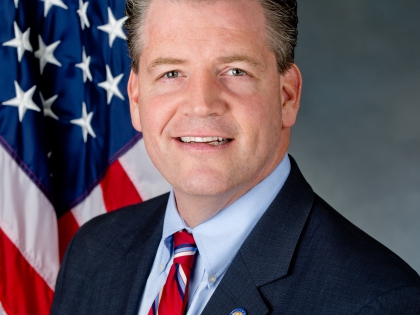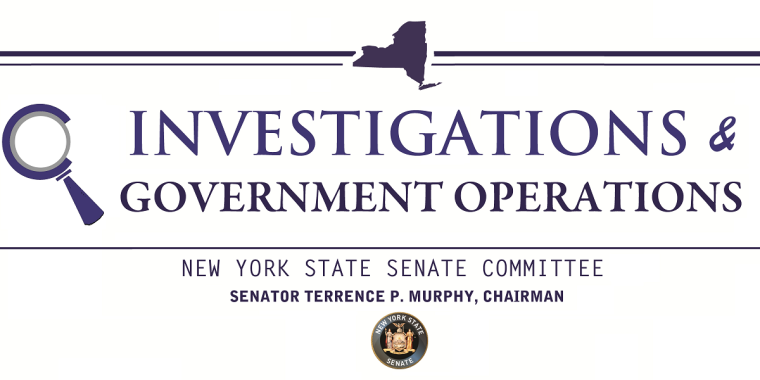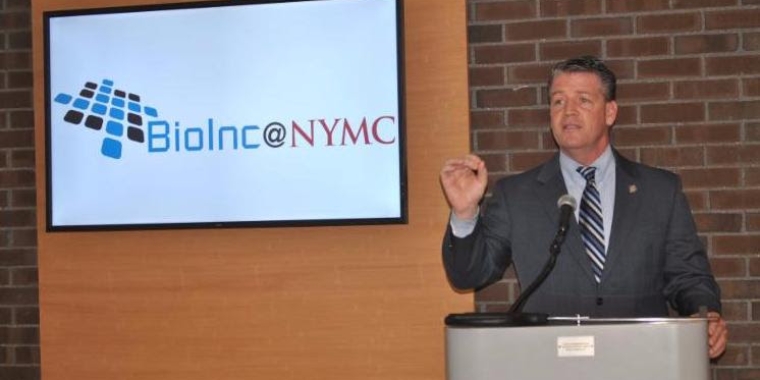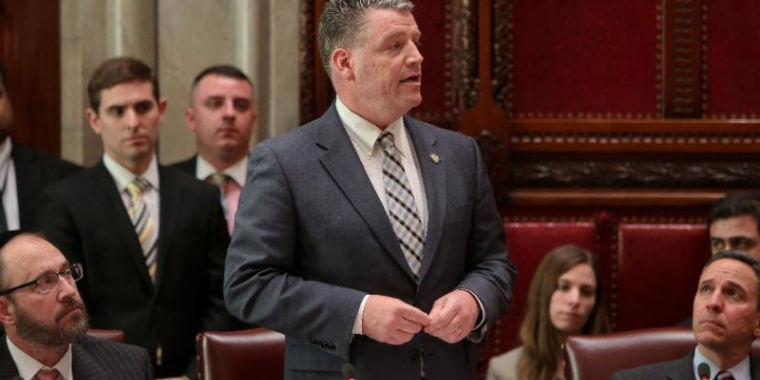
To HAB or HAB Not: Senator Murphy Sets a Watermark With Legislation To Help Eliminate Hazardous Algal Bloom (HABS) In Local Lakes
May 29, 2018

Albany, NY - Harmful algal blooms, or HABs, occur when colonies of algae grow out of control, producing toxic effects on people, fish, shellfish, and birds. The human illnesses caused by HABs can be debilitating or even fatal. The largest algal bloom on record occurred between October and December 1991, covering over 620 miles of the Barwon and Darling Rivers in Australia. In 2014, a potentially deadly bloom in the western basin of Lake Erie poisoned the Toledo, Ohio water system connected to 500,000 people.
Governor Andrew Cuomo recently announced a major investment to combat algal blooms that threaten the recreational use of lakes as well as drinking water. Yet, the State still lacks a specific program and inter-agency approach to this emerging threat to our water supply. To help protect lakes and ponds throughout the Hudson Valley, Senator Terrence Murphy created and sponsored S7752, which creates a Harmful Algal Bloom (HAB) program that provides for the control and mitigation of harmful algal blooms in both marine and fresh water.

The bill also authorizes the development of rural resources to study the effectiveness of pond and lake management programs; provides for emergency response to water contaminations by algal bloom or hypoxia, and requires a study to be reviewed Governor Cuomo, the legislature, state agencies and the harmful algal bloom and hypoxia commission. In addition, the bill allows the Environmental Facilities Corporation to provide funding for emergency drinking water supplies when contamination has resulted from harmful algal blooms or hypoxia.
The bill is of particular importance to the Mohegan Lake area, home of Lake Mohegan, which has often been cited as one of the most polluted bodies of water in New York. It is also has significance for North Salem, where Peach Lake has become susceptible to shoreline blue-green algal blooms.
"We now have a strategy to combat harmful algal blooms, one of the worst water quality issues that we needed to solve in our region," said Senator Murphy. "Algal blooms have had a detrimental effect on local economies, forcing beaches to close, and they remain a threat to indigenous wildlife and the residents that live near our lakes. The HAB program provides effective monitoring and redemptive measures that will help save our lakes and ponds and keep them clean for generations to come."
"We are appreciative of Senator Murphy's support to get Peach Lake into the HAB study that the DEC will be doing for a very small number of lakes in New York State," said North Salem Town Supervisor Warren Lucas. "If accepted in the part of the $60M in program funds will be used to help Peach Lake. This will mean a huge difference in water quality of Peach Lake and the value of the homes around the lake. Nineteen percent of the homes in the North Salem are on Peach Lake."

Greg Boyer, Director, Great Lakes Research Consortium, Harmful Algal Bloom Researcher, and Professor of Biochemistry, SUNY College of Environmental Science and Forestry stated, "While we understand the local impacts of harmful algal blooms, it is important to recognize that these blooms are happening across the state. They can have a dramatic impact on the local economy. It is important to have a mechanism to provide the funds needed for these local communities to deal with the impact of these blooms, be it on their drinking water supplies, the closure of their public beaches, or their ability to recreate in their individual lake or water body."
"I am pleased to see that Senator Murphy is committed to saving our local lakes and ponds from the devastating effects of algal blooms," commented Ken Belfer, President of the Mohegan Lake Improvement District. "Algal blooms can be potentially harmful to aquatic life and livestock. The HAB program will help keep our recreation areas open, which is very important to the strength of local economies."
In recent years, the extent, duration, and impacts of HABs have increased. HABs occurrence has been linked to phosphorus and other nutrient inputs and is exacerbated by heavy rain events and warming waters related to climate change. In 2015, the Department of Health documented an estimated 35 HAB-associated illness cases in 16 New York counties, all associated with exposure during recreational activities like swimming and boating.
In 2016, drinking water for more than 40,000 people in Cayuga County was impacted when HABs-related toxins were detected in finished drinking water for the first time. In 2017, more than 100 beaches were closed for at least part of the summer due to HABs, and Skaneateles Lake, the source of unfiltered drinking water for several communities including the city of Syracuse, was threatened by algal blooms for the first time. While the finished drinking water was not impacted, this event highlights the need to better understand the causes and control of these HABs.
Share this Article or Press Release
Newsroom
Go to NewsroomInvestigations Committee checks on rebate checks
February 7, 2017

Murphy, officials, mark 2nd anniversary of Valhalla crash
February 3, 2017

Murphy Calls For State To Invest In Hudson Valley Biotech Boom
February 1, 2017

